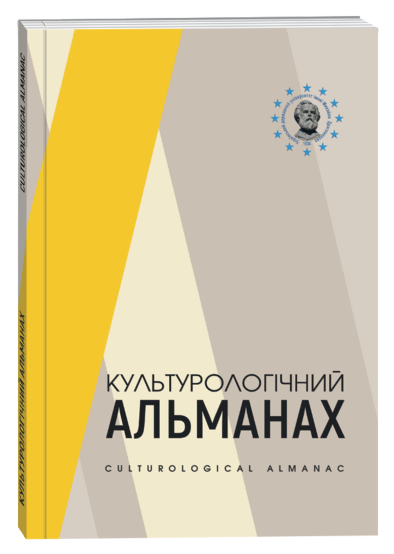MULTIDIMENSIONAL CULTURAL REPRESENTATIONS OF DESIGN: EDUCATIONAL POTENTIAL
DOI:
https://doi.org/10.31392/cult.alm.2023.2.18Keywords:
industrial design, toy design, educational potential, design philosophy, human dimension, postindustrial society.Abstract
The article focuses on the exploration of the multidimensional aspects of cultural representations within design. The primary emphasis lies in highlighting the educational and developmental possibilities of design within contemporary intricate contexts. It is demonstrated that the evolution of industrial design also transforms avenues for spiritual and cultural production. The article substantiates the notion that design permeates various facets of daily life, contributing to human self-realization and the formation of value orientations, aesthetic preferences, and consumer culture. Contemporary design and architecture are positioned as carriers of humanistic and ethical potential, prioritizing individuals' experiences within their anthropocentric environments. The article advocates for the pressing necessity to activate the humanistic, educational, and even therapeutic dimensions of design. This relevance is underpinned by the escalating influence of design on global society and its potential to harmonize existence. It is highlighted that by offering numerous opportunities for self-expression, design fosters creativity and encourages introspection, even in routine consumption. Through the lens of interdisciplinary synthesis, a comprehensive analysis of toy design is conducted, underscoring the significance of high-quality design solutions within the realm of industrial design, especially when the intended recipients are children. The article establishes that collaborative interactions among designers, psychologists, and educators are essential to amplify the educational potential of this design category. Neglecting such collaboration may hinder the intended impact of the products. This notion gains particular importance in recognizing the educational and developmental prospects of industrial design in a post-industrial society. This epoch offers extensive prospects for human creativity while also amplifying consumer activity, which holds the potential to immerse individuals within a materialistic world.
References
Берн, Е. (2016). Ігри, у які грають люди. Книжковий клуб «Клуб Сімейного Дозвілля».
Гейзінга, Й. (1994). Homo Ludens. Київ. «Основи».
Грушевський, М. (2011). Дитина у звичаях і віруваннях українського народу. Київ. Вид-во Либідь.
Загарницька, І.І. (2011). Роль сучасних іграшок в житті дитини. Нова парадигма, Зб наук. праць. К. Вид-во НПУ імені М. П. Драгоманова. Вип. 103. С. 11–17.
Рижова І.С. (2006). Філософія дизайну: теоретико-методологічні засади. ЗНТУ.
Felton, E., Zelenko, O., & Vaughan, S. (Eds.). (2013). Design and ethics: Reflections on practice. Routledge.
Fry, T., & Nocek, A. (Eds.). (2020). Design in Crisis: New Worlds, Philosophies and Practices. Routledge.
Findeli, A. (1994). Design Issues: History, Theory, Criticism. The MIT Press, Cambridge, Massachusetts. Volume: 10, Issue: 2, pp. 49–68.
Fry, T. (2004). The voice of sustainment: Design ethics as futuring. Design Philosophy Papers, 2(2), 145–156.








